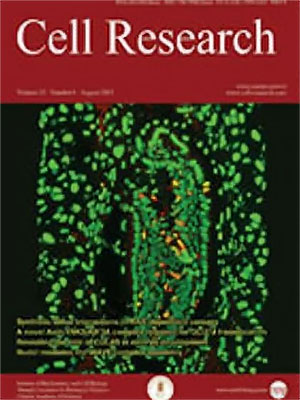
Volume 14, No 4, Aug 2004
ISSN: 1001-0602
EISSN: 1748-7838 2018
impact factor 17.848*
(Clarivate Analytics, 2019)
Volume 14 Issue 4, August 2004: 341-346
ORIGINAL ARTICLES
Apoptosis in Granulosa cells during follicular atresia: relationship with steroids and insulin-like growth factors
Yuan Song YU*, Hong Shu SUI, Zheng Bin HAN, Wei LI, Ming Jiu LUO, Jing He TAN**
Laboratory of Animal Reproduction and Embryology College of Animal Sciences and Veterinary Medicine, Shandong Agricultural University, Taian, Shandong 271018, China
Correspondence: Jing He TAN(tanjh@sdau.edu.cn)
It is well known that during mammalian ovarian follicular development, the majority of follicles undergo atresia at various stages of their development. However, the mechanisms controlling this selection process remain unknown. In this study, we investigated apoptosis in granulosa cells during goat follicular atresia by terminal deoxynucleotidyl transferase-mediated dUTP nick end labeling (TUNEL). The changes in the levels of steroids, insulin-like growth factors (IGFs) and IGF receptors were studied by radioimmunoassay (RIA) and semi-quantitative reverse transcription-PCR. We found that the percentage of apoptotic granulosa cells in the atretic (A) follicles was significantly higher than that in the slightly atretic (SA) and healthy (H) follicles. The level of estradiol and the ratio of estradiol to progesterone in H follicles were significantly higher than those in A follicles. On the other hand, the level of progesterone was not significantly different among these follicle types. We also found that the level of IGF-I in H follicles was higher than in SA and A follicles, whereas the amount of IGF-II did not vary significantly. The expression of IGF receptor also decreased in A follicles as compared to that in H and SA follicles. These results suggested that estradiol and IGF-I might be involved in controlling apoptosis in granulosa cells during follicular atresia.
FULL TEXT | PDF
Browse 2038


